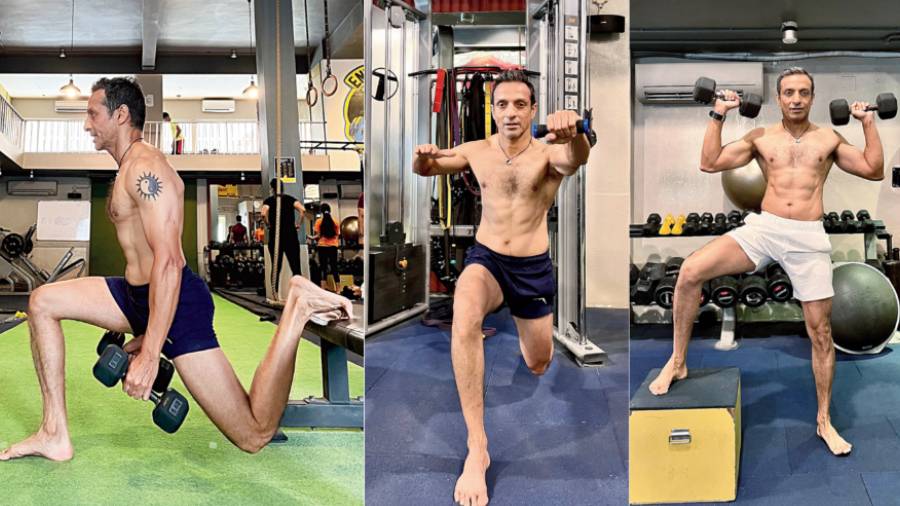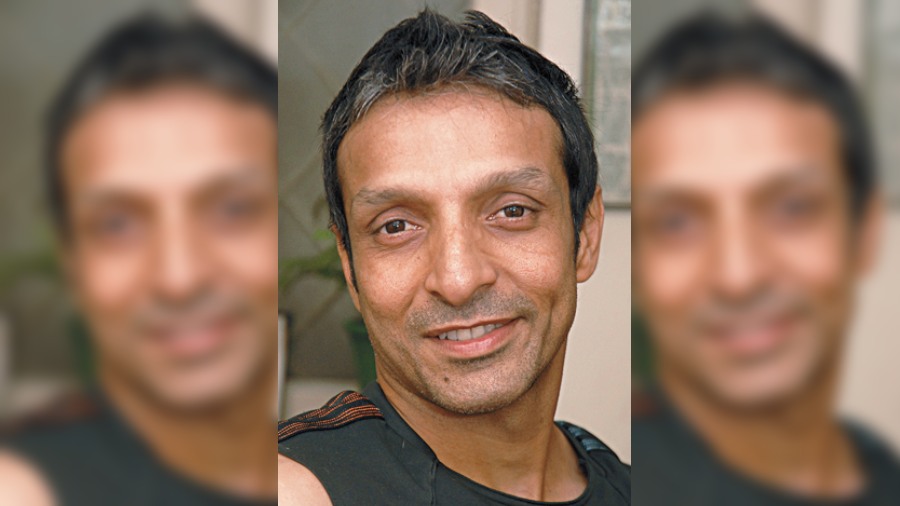Cricket watchers are familiar with images of the wicket-keeper falling and rolling over on their backs after they have leapt to stop a wayward ball from a fast bowler. When fielders in the outfield run and dive to take a catch, they invariably tumble over in an effort to absorb the impact that the ground creates with the body. Have you ever wondered why this happens? Why can’t the human body just come to a perfect balanced stop after impact or after generating force? Here is one more example: When footballers strike the ball, why do they follow through with the momentum?
This is because every force, every reaction creates an equal and opposite reaction — it’s Newton’s Third Law. And our body has learned to cope with such external forces as well as the force generated by our own bodies with the support of a sophisticated and intricate design of its own connective tissue. How does the body absorb these forces effectively without getting hurt or injured? This is the question that intrigued Professor Andry Vleeming (clinical anatomy and rehabilitation specialist at University of New England).
Professor Vleeming and his colleagues wanted to study how such large forces were dissipated within the body without causing physical harm. The obvious search was for the mechanical pathway and process that allowed such large forces to be absorbed by the muscles and other connective tissue. They concluded after extensive research that reactive forces moved through the muscles, connective tissue and joints directly involved in the movement and spread and dissipate to other muscles, tendons, ligaments, bones and joint capsules. If the forces are dissipated over a large surface area instead of being restricted to only one joint or one muscle group, the body is not harmed. If it’s not, for example, the wicket-keeper dives, but instead of rolling lands flat on his chest — there is a solid impact and blow to the body.
Vleeming and his colleagues studied this phenomenon and identified the major groups of muscles, joints, connective tissue and bones that work together to create a continuous chain of action and reaction. He called these groups myofascial slings (‘myo’ means muscles and ‘fascia’ means connective tissue). He identified four such slings that work to dissipate forces between the upper and lower parts of the body. Some of these forces act on the same side of the body while others act on the opposite side of the body generating the force.
NEW LIGHT ON SCIENCE OF STRENGTH AND CONDITIONING
While the examples used by me earlier relate to a cricketer and a footballer, the existence and functioning of the slings affect all of us outside the sporting arena too, in our daily life and activities. Climbing stairs, picking heavy objects, preventing a fall (we may slip), avoiding a crater on the road while riding a bike — these are all activities that create an opposite forceful reaction in our body and our bodies have to learn to absorb such force or impact.
Professor Vleeming’s work has helped to throw new light on both physical rehabilitation as well as the science of strength and conditioning. Physical therapists need to look into not only the injured joints and tissues but the entire sling involved in the functional movement of these muscles and joints. Strength and conditioning coaches, on their part, have to abandon the approach of strengthening just one group of muscles. If you are a swimmer with strong shoulders but a weak core and hamstring/glutes, you are setting yourself up for an injury. Training protocols and methodologies need to enhance the coordinated working relationship between the muscles.
We have explained and described four slings and illustrated four exercises that target the slings and chains.

(L to R) The deep longitudinal sling; Anterior oblique sling; The lateral system
THE EXERCISES
The deep longitudinal sling
This sling runs right through the hamstrings, crosses the pelvis and ends high on the erector spinae muscles (muscles that run along the entire length of the spine) on the opposite side. This sling provides stabilisation and force dissipation during the swing phase of walking and running.
As the swing leg moves forward, it produces rotation in the hips and torso, generating tension in the opposite ‘erector spinae’ group. This force acts in the upward direction and pulls on the sling. Conversely, the hamstrings, in preparation of the foot landing, exerts a downward pull on the sling. These opposite forces help to stabilise the body and dissipate force over a large surface area, spanning from the foot to the opposite side of the neck. When the foot lands, the reactive force from the ground runs upwards and is effectively cushioned by the deep longitudinal sling. Here, I have used the Bulgarian Split Squats to demonstrate this sling.
Posterior oblique sling
This sling comes into action as the rooted leg prepares to move again. The muscles of the glutes extend the hips and propel the femur (thigh bone), generating a rotational force in the body. The “latissimus dorsi” (the largest muscle on the back) on the opposite side is activated to oppose the rotational force and stabilise the body. In the one arm cable pull exercise demonstrated here the left arm is pulling the cable and loading the glutes of the left hip. The right “latissimus dorsi” is providing a counter contraction in the opposite direction. The action of the sling acts like a smart spring, storing and releasing energy.
Anterior oblique sling
The role of the anterior oblique sling is depicted in the cable press in lunge stance demonstrated here. The muscles of the right leg combine with the internal oblique muscles of the core on the same side and external oblique muscles of the opposite side to stabilise the body and generate power in the shoulder (in this case the right one) which is pushing the cable forward.
This action is similar to how the body works in the propulsive phase during walking or running, when the swing leg goes forward and the opposite shoulder rotates back as a counter. The opposing forces at the hip and torso work against each other and act as force absorbers throughout the kinetic chain.
The lateral system
This sling helps to provide frontal plane stability once the foot has hit the ground and the other foot is in swing phase in mid-air. There is an intricate working relationship between the broad, thick muscles radiating out from the side of the pelvis (glutes medius), the thigh muscles of the rooted leg and the deep-lying core muscles that help stabilise the body and maintain knee alignment. If the knee shifts out of its proper alignment, it can strain the ligaments and lead to permanent damage. In normal walking, the pelvis tends to drop towards the side opposite to the rooted leg. The degree of the drop is controlled by the action of all the three muscles mentioned above making walking, running or climbing steps a smooth, effortless and balanced movement. The lateral step up with shoulder press is an excellent exercise to load the lateral system.

Ranadeep Moitra is a strength and conditioning specialist and corrective exercise coach
